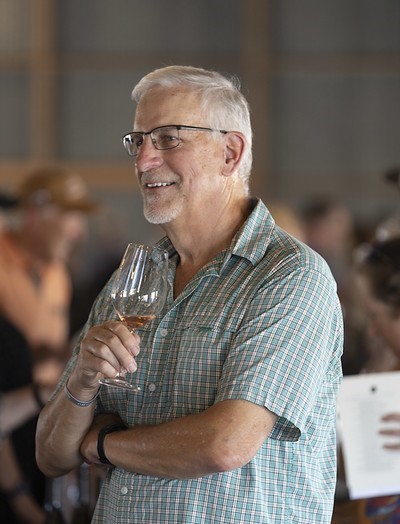
As PGWA celebrates its 5th Anniversary of the approval of the Petaluma Gap American Viticultural Area, we couldn’t think of a better person to highlight in this month’s newsletter than Doug Cover. He is a retired environmental sciences consultant and was a key member of the team, along with a few of our winemakers, growers and other board members, behind PGWA’s success in establishing the AVA. He has been a member of PGWA’s Board of Directors, initially as an active member and now as an emeritus member, for over ten years, quietly giving guidance to our strategic direction, while helping to build the team that governs our organization. Here’s his story.
Where did you grow up; was it in a rural area or a city? What was the impetus for your interest in environmental issues?
I was born and raised in a rural area near Dayton, Ohio, and lived there until I headed off to college at Penn State. I knew at 10 years old that I wanted to study meteorology. What interested me was that something entirely out of human control could affect our daily lives, and I wanted to know how that worked. I built my first weather station at the age of 12, and I was hooked.
You’ve spent your whole life working in environmental science. When did you first get interested in wine and wine growing?
My wife, Tamara, and I (along with our then 15-month-old daughter) moved to Petaluma from the San Diego area in late 1994 when I changed jobs. We enjoyed wine so it was a natural for me to want to learn more about it now that we were in the wine country. After taking a few wine-appreciation classes at the SRJC, what started out as a general interest gained traction and I took more advanced classes in viticulture and winemaking.
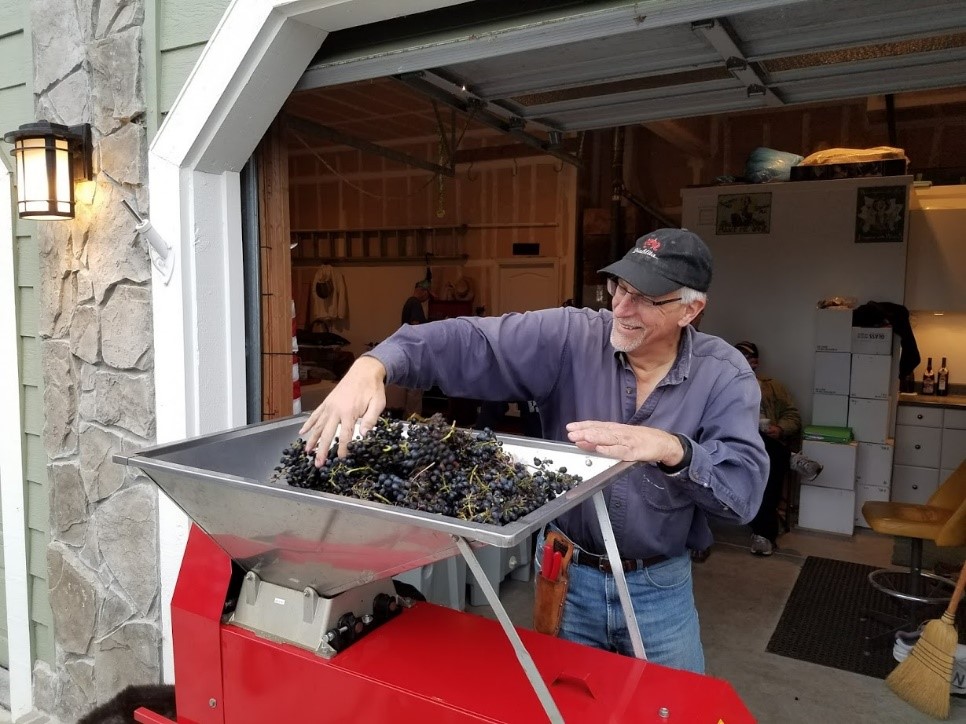
At one time you had a hobby vineyard and produced your own wine. Tell us about the vineyard; did you plant it yourself of did you purchase the property with grapevines already planted? What varieties were planted? Where was it located?
When Tamara and I moved up here from the San Diego area, we ended up buying a home in northwest unincorporated Petaluma on 3 acres of former grazing land near King and Pepper roads. At the time, I had no thought of putting in a vineyard. But after taking viticulture classes at the SRJC and doing some research on the climate and soils in our area, the idea of growing grapes and making our own wine started to take shape. There was a perfect south-facing hillside on the property, so I laid out 6 rows of 20 vines each and together with Tamara we planted the vineyard ourselves – three different clones of Syrah on 101-14 rootstock. I then put in all the posts, trellis system, and drip irrigation. That was 1998, and we farmed it and made wine until we downsized and sold the home and property in 2018.
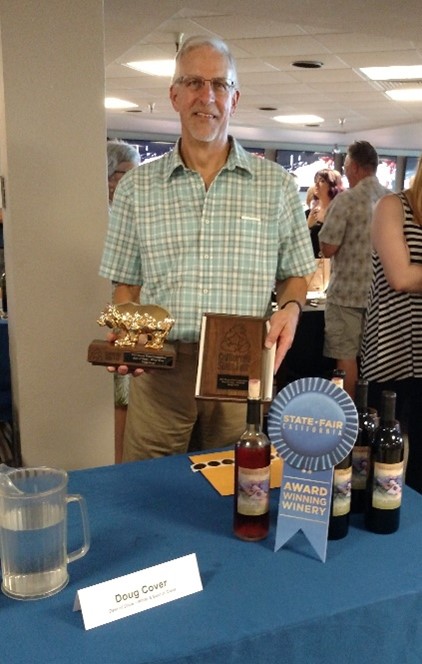
Did you ever consider making wine commercially? Or did you pay heed to the old saying that in order to make a small fortune in the wine business, you have to start with a big one?
I did look into it briefly, but I still had my day job, and it wasn’t worth the paperwork and cost to get bonded for the 25 cases +/- that I could make from our fruit each year. So, we had half of the perfect business – all the expenses and none of the income!
How did you get involved with the Petaluma Gap Winegrowers Alliance and why?
I regularly entered our wine in the home winemaker competition at the Sonoma County Harvest Fair. In 2008, our 2006 Syrah won the Sweepstakes Best Red wine. Shortly after that award was published, some guy named Timo Rivetti contacted me and wanted to meet to find out who the heck I was, since he had seen my name frequently in the Harvest Fair awards lists. Of course, Timo was then on the Board of the PGWA, so he invited me to attend a meeting and meet some of the other growers. That meeting was at Paul Clary’s house, with wine, of course. By the end of the meeting, I was invited to join the Board and I must have said Yes!
According to Ana Keller, who also was a promoter of getting official approval for the AVA, it took some time to get agreement among growers and winemakers to go forward, instead of continuing as an unofficial area within the Sonoma Coast AVA. What was the turning point? How did the team reconcile with those who preferred to keep things as they were?
The turning point came when the TTB began disallowing the use of the term “Petaluma Gap” on the back labels of some wineries. The PGWA had done such a good job of elevating awareness of our region that the TTB considered “Petaluma Gap” a term of “viticultural significance.” So, we were faced with either accepting a “one step backward” situation or proceeding with a petition to become an official AVA. With Ana’s support, we held an open invitation meeting in February 2014 with the grower and winery stakeholders in the area and discussed the pros and cons of proceeding with an AVA petition. Most of the initial resistance was based on the incorrect assumption that if Petaluma Gap became an AVA, then the Sonoma County wineries could no longer use Sonoma Coast AVA on their labels. Once those wineries learned that they could use either AVA name on their wine labels, pretty much all of the resistance evaporated. I believe only one grower said that they did not support the AVA idea but agreed that they would not oppose it.
The application process was lengthy and the TTB required significant proof that the AVA was uniquely different from surrounding areas. How did you go about creating the case for our unique growing conditions? How much data did you have to provide?
We all pretty much knew that the key distinction was the frequency and intensity of the afternoon winds during the growing season. Fortunately, this area is rich with existing meteorological stations, so the challenge just became gathering and analyzing the data. For the AVA petition, we provided five years of hourly wind speed data for eight locations within the proposed AVA and four stations outside the proposed AVA, and we used a variety of graphs and charts to visually show the difference. Of course, there were a lot of other technical hoops to jump through to prepare a complete AVA petition, but the wind speed data were key.
In December 2017, following the wildfires that tore through parts of Sonoma County, you had a phone conversation with Karen Thornton, the AVA Program Manager at the TTB, informing you that the approval of our AVA was complete and would soon be published in the Federal Register. Coincidentally, that same week, PGWA had its annual meeting already scheduled, so it made for the perfect time to raise a glass to our success. How did it feel when you finally heard we’d gotten approval? Tell us about the night it was announced to our members that we had our own AVA.
The TTB had completed its evaluation many months earlier and was prepared to grant final approval, but the political chaos that ensued after the 2016 presential election resulted in a completely unpredictable pathway to conclude the process. I had been in touch with Karen on a regular basis over that time, and she always had the same uncertain outlook. So, her call on December 1, 2017, letting us know that publication of the final rule was imminent came as much as a shock as it did relief! It was incredibly coincidental that the Federal Register publication was on the exact day of our Annual Meeting. While many people at the meeting had already heard the news that the final rule was imminent, many did not know that it had happened on that day. So, the announcement to our membership was an awesome moment.
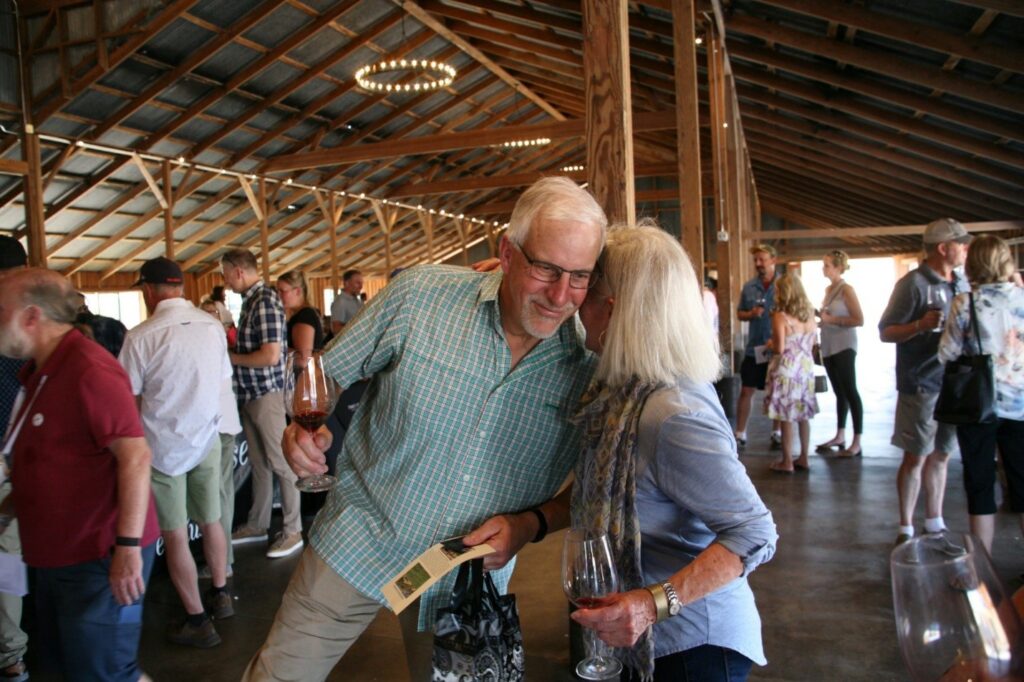
As we celebrate the 5th anniversary of our AVA, what are you most proud of?
Beyond just the fact that we did this largely ourselves, it is particularly rewarding to see how the enthusiasm has been infectious and continues to result in new winery and grower members wanting to be a part. I also love seeing “Petaluma Gap” on the front label of so many outstanding wines!
Our AVA is so young, compared to Russian River, Alexander Valley, Sonoma Valley and other established areas that were approved 20-30 years ago. We have a lot of catching up to do! What advice do you have for the Board to continue to fast track our AVA in the minds of consumers?
For a while, of course, we were the newest AVA in California. So that provided a great launching pad for immediate promotion. That is not the case any longer, so our marketing has already started to pivot to promotion strategies that are effective and sustainable for the long term.
Serving as an emeritus board member, and on our Marketing Committee, requires precious hours; why do you continue to support the group with your time and advice?
I enjoy seeing the Petaluma Gap AVA continue to gain recognition and be successful under the talented leadership of our Board and the new members that we continue to attract, and I see it as a privilege and honor to be able to contribute.
You moved out of Petaluma a few years ago and now live north of the Gap. When you drive past Petaluma, do you have any special feelings about the vineyards you see on either side of the roadways?
I guess the special feeling comes from NOT seeing a bunch of vineyards on either side of the roadways! Unlike some of our AVA neighbors, the Petaluma Gap vineyards tend to be tucked into valleys and scattered on hillsides in harmony with the area’s rural open space and rich agricultural history.
